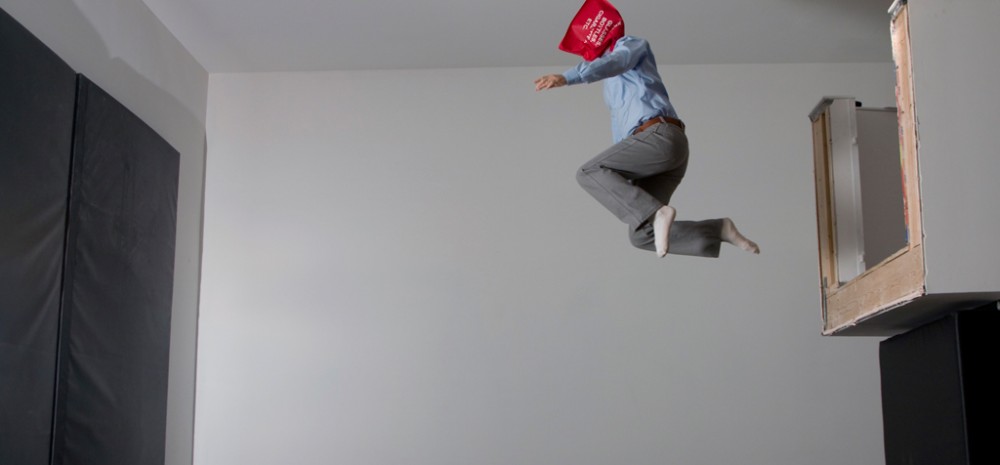Lucky Number Seven is well underway. Discussions have been shooting back and forth between the curatorial team and myself, and the project is really starting to take shape. The artists have finally been selected, with the long-awaited list to be announced soon. I can however reveal that there are 25 artists from 16 countries participating in the exhibition. They are quickly becoming friends, along with the brilliant curatorial team, which has made significant and unique contributions to the process. Their involvement will help inspire and challenge the artists to realize the best work that they have produced to date. The energy that takes place between people engaged in creative activity has been a driving force in my curatorial work, and is a central element of Lucky Number Seven.
Although it has become somewhat of a buzzword of late, collaboration has long provided me with the means to explore the nature of creativity within a discursive yet intuitive situation. By devolving the authoritative role of chief curator into a network of curatorial partners, an element of discovery is introduced. Transparency is also inserted into the selection process, for curators rely on local contacts for information and expertise while putting together any large international exhibition. Lucky Number Seven brings this aspect into the foreground, involving 19 curators and their institutions directly in the project.
Each curator proposed three to five artists to me for review, which through further dialogue was narrowed down to one to represent each organization. The organizations were selected following a year of extensive discussions and international research. What I was after were like-minded not-for-profit spaces that reflected the goals and objectives of SITE Santa Fe – strong community support, clear vision, extensive outreach and education programs, and a high-quality exhibition program of local and international contemporary art. It has been a fascinating and illuminating process of self-education, uncovering organizations, practices and art scenes that were unfamiliar to me previously.
This educative aspect has become incorporated into the experimental and process-oriented nature of the exhibition, as well as creating new links between the organizations across the globe. It has been exciting and rewarding to be working in Santa Fe, and getting to know the city and its local communities. A crucial aspect of Lucky Number Seven is its engagement with local people, and following meetings with a broad range of the city’s cultural institutions, we are pleased to announce that a number of them will be exhibition partners with SITE.
Offering their spaces, collections, and knowledge, these organizations will work with a number of the artists to realize and present their works for the exhibition. This diversity of venues and locations will open up the exhibition to new audiences, providing access to contemporary art to many who may not have experienced it before. The emphasis on site-specificity has been a core component of my curatorial practice over many years. It provides a direct means for the public to access an artist’s work, with the relations between artist, viewer and context made readily apparent.
All of the works for Lucky Number Seven will be site-inspired commissions that will not exist beyond the exhibition. This emphasizes temporality and process, and provides the artists with the opportunity to push their practices into new directions. The advantage of an exhibition such as Lucky Number Seven is that it allows for experimentation and play, and is not 5 dependent on the forces of the market. It proposes instead a field of possibilities, grounded in the unique environment and history of Santa Fe. The aesthetic experience of the exhibition is therefore very much a construction of the moment, involving audiences in an ever-unfolding process of discovery as they move between the works around the city.
Lucky Number Seven proposes an alternative to the current format of biennials, which have evolved in recent years into international mega-exhibitions studded with big-name, well-traveled artists. The artists featured in this biennial are all emerging practitioners, none of whom have visited Santa Fe before (and for most, it’s also their first trip to the United States). The artists will be coming in January for their first site visit and to meet each other, returning in June from anywhere between one to three months to make their works. There will be no shipping of materials or art works, with everything created in situ. With its emphasis on the handmade, and on local knowledge and collaboration, Lucky Number Seven aims to create an intimate, rigorous yet playful exhibition that bridges audiences in a spirit of discovery and learning. In this way, the exhibition evokes the energy of some of the great collective projects of the past, from the Vienna Secession (one of the biennial’s institutional partners) to the Construction in Process series to artist initiatives such as Gordon Matta-Clark’s FOOD.
Related Website: SITE Santa Fe’s website for the 7th Biennial, Lucky Number Seven
